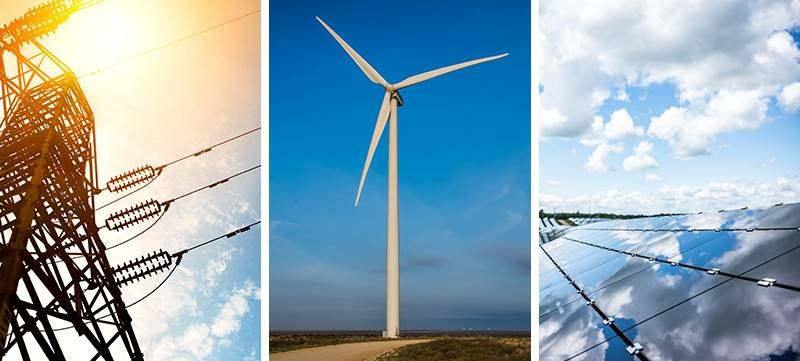Keeping Pace with Technology
In growing regions of the country, energy infrastructure, much like transportation infrastructure, is not keeping pace with technological advances in many commercial and industrial companies. Capital allocation is scarce due to lengthy payback terms. There is a lack of resources to maintain and operate newer technology, as well as a prevailing mindset of deferred maintenance, conceding, “If it isn’t broken, don’t fix it” – or worse yet, “It is broken, but let’s just put another roll of duct tape on it and run it for another year.”

It is easier for companies to rationalize capital expenditures in areas that generate revenue and are tied to the manufacturing process. Examples might include adding a new production line, building or expanding a plant to produce new products, or even adding to the workforce. Energy infrastructure components like chillers, cooling towers, boilers and air compressors are often put on the back burner until a catastrophic failure occurs. Or, they may have been piecemealed as the facility and production expanded, creating the potential for future issues with compatibility and uniformity. Revenue is always more attractive than replacement projects; however, if an energy system fails, it can have a systematic and immense impact on operations, causing production downtime and significant loss of revenue. Now is a great time to proactively assess your systems and consider strategic replacement with new, more efficient solutions.
The technological advances in energy infrastructure are a rapidly changing landscape. Innovations in microgrids, fuel cells, solar with storage, distributed generation and more can potentially provide cost-effective, clean, scalable and sustainable solutions that meet all your current and future energy needs. Understanding the advantages and challenges of each technology and solution, as well as how they can supplement or replace aging infrastructure, is a critical core competency.
One challenge to these innovations is an available and skilled workforce. It’s no surprise that the manufacturing workforce is aging and vacancies continue to be an issue, in addition to the enhanced qualifications required to maintain newer systems with newer technologies. According to research conducted by Deloitte and The Manufacturing Institute, over the next 10 years, manufacturers will likely need to add 4.6 million manufacturing jobs – 2.4 million of which may go unfilled. Currently, this forecasted statistic is already happening, with more than 500,000 vacant manufacturing jobs in the United States. A trusted advisor will help you navigate not only the technologies but also the skilled workforce needed to operate and maintain them.
Deferred maintenance continues to be a common practice. There is a comfort in operating old systems due to the workforce’s institutional knowledge. Temporary fixes remain standard practice, while quantifying the cost of deferred maintenance versus purchasing new energy solutions often goes underutilized. In many cases, it takes a catastrophic event that causes total failure of equipment or parts before a change is made. Newer technologies and equipment options can offer lower maintenance and provide potential savings not currently considered. Having expert advice on the most beneficial overall solution, as well as the business case for change, can be a significant benefit to organizations that do not currently have a plan to address aging infrastructure.
At Duke Energy One, we replace, upgrade, retrofit and maintain existing and new energy solutions, including microgrid options, fuel cells, backup generators, central utility plants, chillers, boilers, air compressors, HVAC systems, lighting, solar with or without battery storage, UPS, electrical infrastructure, co-generation and more. Duke Energy One focuses on supporting investments “past the meter” for businesses across the United States. With the recent acquisition of solid oxide fuel cell generation from Bloom Energy, Duke Energy One is a vanguard for innovative solutions that address customers’ needs in meeting sustainability, energy reduction and operational efficiency goals.
Sources:
https://www.energy.gov/articles/how-microgrids-work
https://www.bls.gov/cps/cpsaat18b.htm
https://www.industryweek.com/talent/how-manufacturers-will-tackle-talent-shortage-2019



